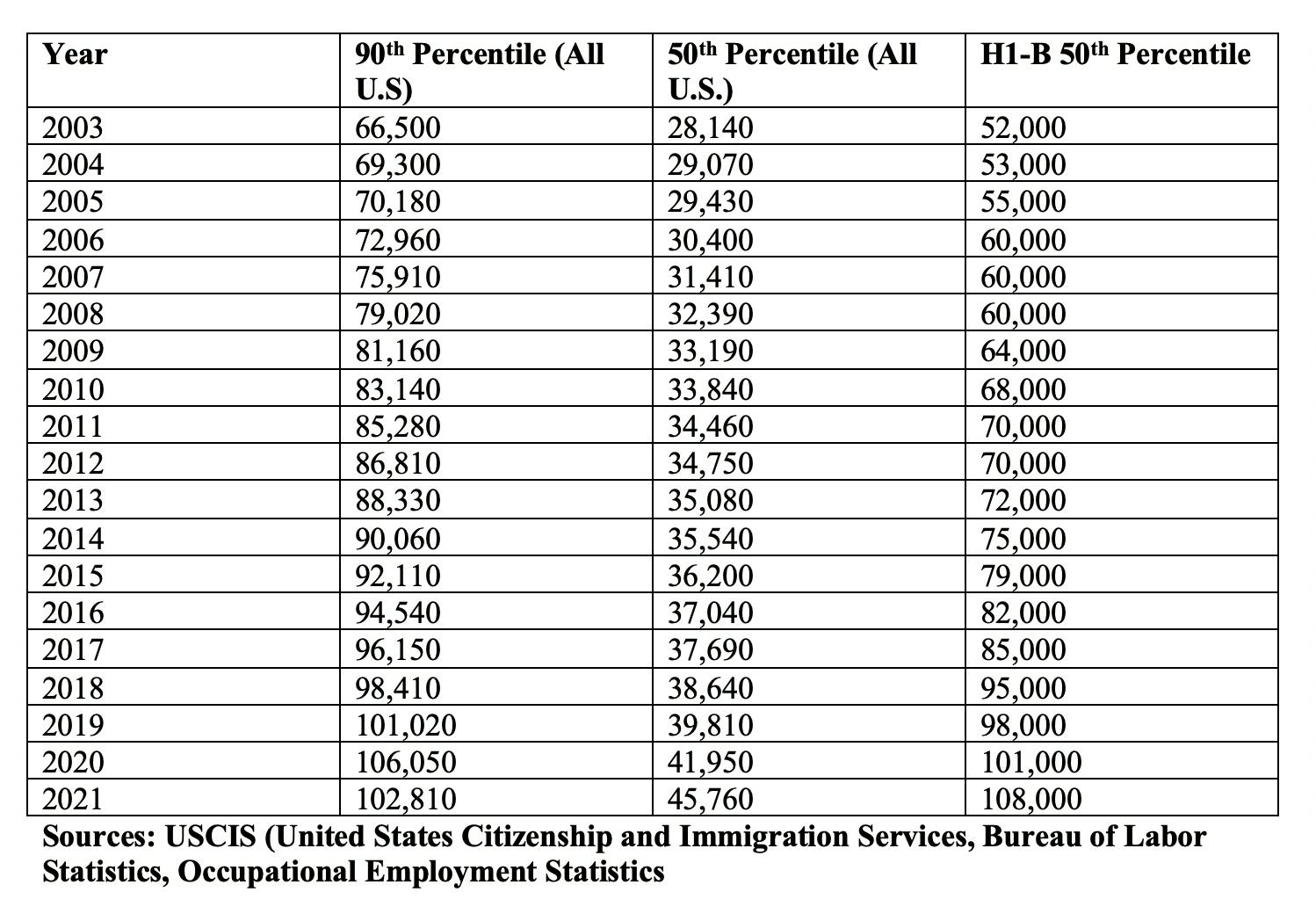The USCIS has released new data that shows the strength of the H1-B non-immigrant visa program up until FY 2021. Although the data is not out yet for 2022, the overall trends for H1-B annual salaries is very promising. In March, the USCIS held it’s H1-B lottery for employers who registered into the online system, and this month the USCIS will begin to accept H-1B cap petitions on behalf of lottery selectees. The petition filing period will end no earlier than 90 days thereafter.
Despite what some may think regarding the H1-B non-immigrant visa program, the recent data that has been published overwhelmingly shows the strength of H1-B visa in terms of annual salary and economic benefits to the United States. In order to better understand this, let’s take a closer look at the published data that is available from fiscal year 2003-2021. The table for this data has been provided below.
The USCIS has broken up data on U.S. citizens and their annual salaries and respective percentiles, as well as H1-B earners and their 50th percentile annual salaries. This data is meant to compare U.S. citizen earners to H1-B earners, who are non-citizen immigrants living in the United States. Throughout the chart provided we can see a clear trend—even the 50th percentile H1-B annual salaries tend to be much higher than the U.S. citizen 50th percentile annual salary, and even come close to the 90th percentile U.S. citizen annual salary in most years from 2003-2020. In short, H1-B non-immigrants have some of the most competitive salaries in the United States.
For example, in 2020, U.S. citizens in the 90th percentile of annual salaries made on average $106,050 per year. Workers who were in the 50th percentile made only $41,950 per year. However, H1-B non-immigrants in the 50th percentile made 101,000 in the same year. In 2021, the 90th percentile of U.S. citizen annual salaries was $102,810, while the H1-B 50th annual salary was even higher at approximately $108,000 annually.
Looking closely at the chart, we can also see when the annual salaries of H1-B workers really started to increase exponentially. From 2004 to 2010, the annual salary for 50th percentile U.S. citizen workers was well below the 50th percentile of H1-B annual salaries. However, H1-B salaries were never double what a U.S. citizen was making in the same year. In 2010 that started to change. Every year from 2010 to 2021, the 50th percentile H1-B annual salary was more than double the 50th percentile U.S. citizen salary. The difference is most severe in 2020 and 2021 when 50th percentile H1-B workers almost made triple what a 50th percentile U.S. citizen was making annually.
Overall, we can see a progressive trend where H1-B 50th percentile annual salaries are most comparable to the 90th percentile U.S. citizen annual salary, meaning that H1-B workers, as soon as they arrive in the United States, are already amongst some of the highest paid workers in the country.















